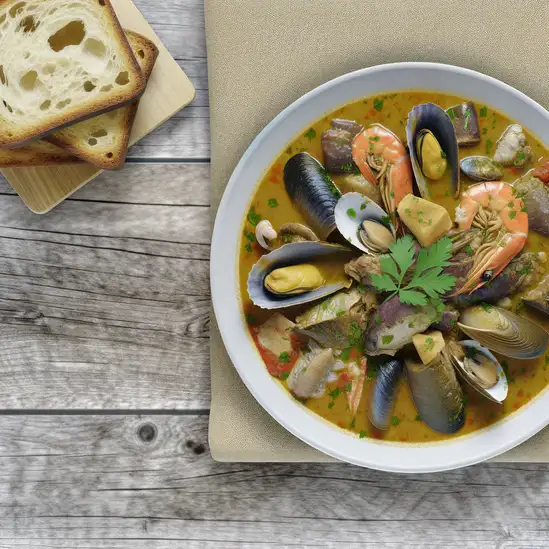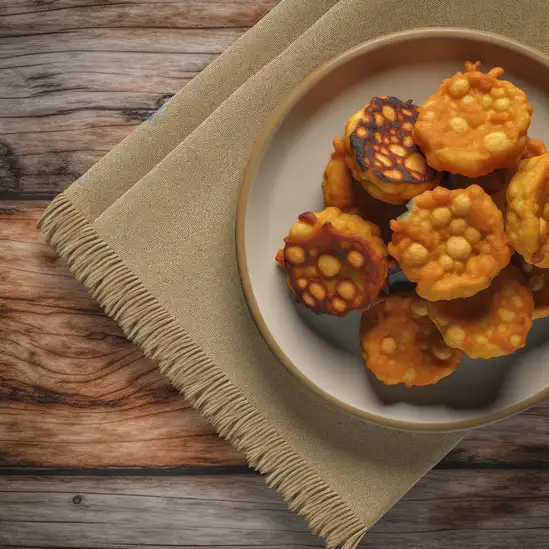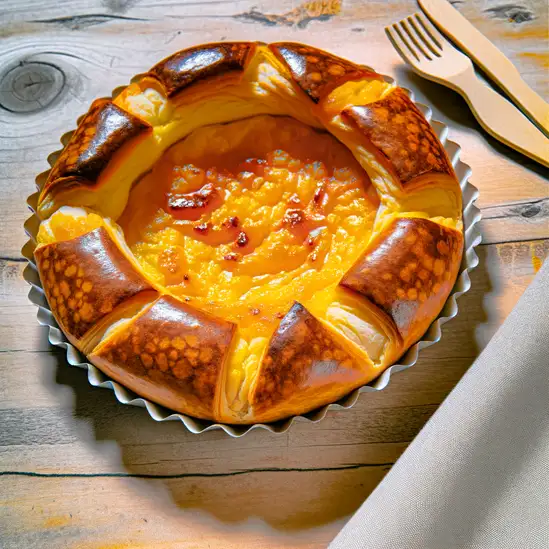



If you find yourself wandering through Marseille’s 13th arrondissement,you’ll quickly notice it’s a place where the city’s pulse feels both vibrant and grounded. There’s a raw,authentic energy here—less polished than the touristy spots but bursting with life and stories. The streets hum with the chatter of locals,the scent of fresh bread mingling with spices from North African markets,and the distant splash of the Mediterranean just beyond the horizon. It’s a neighborhood where cultures blend seamlessly,creating a rich tapestry of flavors,sounds,and colors. Walking through the 13th,you’ll catch glimpses of street art that tell tales of the community’s spirit and resilience. The markets are alive with vendors calling out,offering everything from fragrant olives to sweet,sun-ripened figs. Grab a seat at a small café and sip on a strong espresso while watching the world go by—kids playing soccer in the square,elders sharing stories on benches,and the occasional burst of laughter from a nearby boulangerie. What makes this part of Marseille truly special is its unpretentious charm. It’s a place where you can feel the city’s heartbeat in everyday moments—the clinking of glasses over a shared meal,the aroma of freshly grilled seafood,and the warm smiles of neighbors who’ve lived here for generations. Visiting the 13th isn’t just about seeing a new place; it’s about stepping into a living,breathing community that invites you to slow down and savor the simple,beautiful rhythms of life.
The information on this page is currently being reviewed by Tripkliq and should be used as a guide only
Eng word: Hello
Eng pronunciation: bohn-zhoor
Local language: Bonjour
Eng word: Goodbye
Eng pronunciation: oh ruh-vwahr
Local language: Au revoir
Eng word: Thank you
Eng pronunciation: mehr-see
Local language: Merci
Eng word: How much
Eng pronunciation: kohm-byen
Local language: Combien
Eng word: Toilet
Eng pronunciation: twa-let
Local language: Toilettes
Eng word: Help me
Eng pronunciation: eh-deh mwah
Local language: Aidez-moi
Eng word: Yes
Eng pronunciation: wee
Local language: Oui
Eng word: No
Eng pronunciation: noh
Local language: Non
Eng word: Excuse me
Eng pronunciation: ehk-skew-zay mwah
Local language: Excusez-moi
Marseille, founded in 600 BCE by Greek settlers from Phocaea, is the oldest city in France. Its rich history spans over 2,600 years, making it a fascinating destination for history enthusiasts.
Marseille is famous for its traditional soap,'Savon de Marseille,' which has been produced since the 12th century. Made from olive oil and natural ingredients, it remains a symbol of the city's artisanal heritage.
The Old Port of Marseille has been the heart of the city since ancient times. It served as a major trading hub for the Greeks, Romans, and beyond, and today it is a vibrant area filled with restaurants, markets, and stunning views.
The basilica of Notre-Dame de la Garde, built in the 19th century, is a symbol of Marseille. Perched on a hill, it offers breathtaking panoramic views of the city and the Mediterranean Sea.
The Château d'If, located on a small island off the coast of Marseille, was built in the 16th century as a fortress and later became a prison. It gained fame as the setting for Alexandre Dumas' novel 'The Count of Monte Cristo.'
Marseille has been a crossroads of civilizations for centuries, welcoming traders, immigrants, and travelers from around the Mediterranean. This diversity is reflected in its architecture, cuisine, and vibrant cultural scene.
The Canebière is Marseille's historic main street, stretching from the Old Port. Once a bustling center of trade and commerce, it remains a lively area filled with shops, cafes, and historical landmarks.
Just outside Marseille lies the stunning Calanques National Park, a series of rocky inlets and turquoise waters. This natural wonder has been a source of inspiration for artists and a favorite spot for outdoor enthusiasts.
The Palais Longchamp, completed in 1869, is a magnificent monument celebrating the arrival of water to Marseille via the Durance River. It houses the city's Fine Arts and Natural History museums.
In Marseille 13, the most common Power Adaptor is Type C, Type E.



A traditional Provençal fish stew made with various types of fish, shellfish, and aromatic herbs, typically served with a side of rouille sauce and crusty bread.

Fried chickpea flour cakes that are crispy on the outside and soft on the inside, often enjoyed as a snack or appetizer.

A garlic mayonnaise that is often served with a variety of vegetables, fish, and meats, making it a staple in Provençal cuisine.

An anise-flavored spirit that is a popular aperitif in Marseille, typically diluted with water and served over ice.

A hearty dish made with sheep's feet and stuffed tripe, slow-cooked in a rich tomato and herb sauce, showcasing the region's rustic culinary traditions.

A sweet brioche filled with a creamy mixture of butter and orange blossom, originally from Saint-Tropez but popular in Marseille as well.
Imagine stepping into a place where the sun seems to linger just a little longer,casting a golden glow over pastel-colored buildings and the sparkling Mediterranean Sea. That’s Nice for you—a city that effortlessly blends the relaxed charm of a seaside town with the vibrant pulse of French culture. Walking along the Promenade des Anglais,you’ll feel the gentle sea breeze on your skin and hear the rhythmic crash of waves mingling with the laughter of locals and tourists alike. The scent of freshly baked baguettes and rich espresso drifts from cozy cafés,inviting you to pause and savor the moment.
Nice has this wonderful rhythm,a mix of old-world elegance and laid-back joie de vivre. The narrow streets of the Old Town buzz with life—vendors calling out their colorful produce,the clinking of glasses in bustling bistros,and the occasional melody from a street musician. It’s a place where you can lose yourself exploring vibrant markets,then find a quiet spot to watch the sunset paint the sky in shades of pink and orange over the harbor.
What really makes Nice stand out is its effortless blend of cultures—French sophistication meets Mediterranean warmth. Whether you’re nibbling on a socca (a chickpea pancake) or sipping rosé at a terrace café,there’s a genuine friendliness that makes you feel like you belong. It’s a city that invites you to slow down,breathe deeply,and soak in the simple pleasures of life by the sea.
Barcelona feels like a vibrant mosaic where every corner pulses with life and color. The moment you step onto its sun-drenched streets,you’re wrapped in a warm Mediterranean embrace—salt in the air,the distant hum of waves mingling with lively chatter from bustling cafés. The city’s energy is contagious,a blend of old-world charm and modern creativity that invites you to slow down and savor each moment.
Wandering through the narrow alleys of the Gothic Quarter,you’ll hear the soft clinking of glasses and the melodic strum of a street guitarist,while the scent of fresh-baked bread and roasting coffee drifts from cozy bakeries. Barcelona’s architecture is like a living art gallery—Gaudí’s whimsical buildings,with their undulating lines and vibrant mosaics,feel almost dreamlike against the bright blue sky. It’s a place where history and imagination dance together.
Food here is a celebration in itself. Imagine biting into a perfectly crispy,golden croqueta or savoring the rich,smoky flavors of a traditional paella,all washed down with a glass of chilled cava. The city’s markets,like La Boqueria,burst with colors and aromas—ripe tomatoes,fresh seafood,and fragrant herbs—that make you want to taste everything.
What makes Barcelona truly special is its spirit:a city that lives passionately,where locals and visitors alike gather to share stories,laughter,and the simple joy of being in a place that feels both timeless and alive. Trust me,once you’ve experienced it,you’ll carry a piece of Barcelona’s magic with you long after you leave.
A glamorous city-state on the French Riviera,Monaco is famous for its luxury lifestyle,Monte Carlo Casino,and proximity to the Mediterranean islands of Îles de Lérins.
ExploreIf you ever find yourself dreaming of a place where the Mediterranean sun kisses warm,golden stone streets and the scent of salty sea mingles with fresh herbs from nearby markets,Ajaccio is that kind of magic. Walking through its narrow alleys,you’ll hear the gentle hum of locals chatting over espresso,the clink of glasses from cozy cafés,and the distant call of seagulls above the harbor. It’s a city that feels alive but never rushed,where history and everyday life blend effortlessly.
Ajaccio’s charm is deeply tied to its roots—this is Napoleon Bonaparte’s birthplace,and you can feel the weight of history in the grand old buildings and the proud,welcoming spirit of its people. But it’s not just about the past; the city pulses with vibrant Corsican culture. You’ll catch the aroma of freshly baked pastries,the sharp tang of local cheeses,and the sweet,earthy notes of chestnut honey at the markets. Sitting by the waterfront,watching fishing boats bob gently on turquoise waters,you might even taste the freshest seafood you’ve ever had,paired with a glass of crisp Corsican wine.
What really stays with you is the atmosphere—warm,unpretentious,and full of life. Whether you’re wandering the sun-dappled squares,exploring the rugged coastline just beyond the city,or simply savoring a gelato while watching the sunset paint the sky in shades of pink and gold,Ajaccio invites you to slow down and soak it all in. It’s a place that feels like a heartfelt welcome,one you’ll want to return to again and again.
Palermo feels like stepping into a vibrant mosaic where every corner hums with life and history. The city’s energy is a mix of old-world charm and raw,bustling street scenes—imagine narrow alleys lined with colorful market stalls,the air thick with the scent of fresh citrus,roasting coffee,and salty sea breeze. As you wander,you’ll hear the lively chatter of locals bargaining over fresh fish and the distant melody of street musicians playing traditional Sicilian tunes. It’s a place where the past and present dance together effortlessly.
What really grabs you about Palermo is its character—gritty yet warm,chaotic yet inviting. The architecture tells stories of centuries,from the intricate Arab-Norman palaces to the baroque churches that seem to glow in the golden afternoon light. But it’s not just about sights; it’s the feeling of sitting at a tiny trattoria,savoring arancini that crackle with every bite or a plate of pasta alla Norma bursting with fresh tomatoes and ricotta salata,while the world buzzes around you.
Palermo’s soul is in its people and their love for life,food,and tradition. Whether you’re exploring the vibrant markets like Ballarò or soaking in the sunset over the Mediterranean from the ancient fortress walls,you’ll find a city that invites you to slow down,breathe deeply,and savor every moment. It’s messy,passionate,and utterly unforgettable.
Imagine wandering through narrow,winding streets where every corner reveals a slice of history,the salty breeze from the Ligurian Sea mingling with the rich aroma of fresh basil and roasting coffee. That’s Genoa for you—a city that feels alive in the most authentic way. It’s not polished or overly touristy; instead,it’s a place where the past and present dance together,from the grandeur of its Renaissance palaces to the lively chatter spilling out of tiny trattorias. You’ll hear the clinking of glasses and the hum of locals debating football,all set against the backdrop of colorful buildings stacked like a painter’s palette along the harbor.
Genoa’s character is deeply tied to the sea. The port pulses with energy,fishing boats bobbing alongside sleek yachts,and the scent of fresh seafood wafts through the air. Don’t miss trying the local focaccia—crispy on the outside,soft and fragrant inside—or a plate of trofie al pesto,where the basil pesto tastes like sunshine captured in a sauce. The city’s museums and narrow alleys invite you to slow down and soak in stories of explorers and merchants who once set sail from here.
What makes Genoa truly special is its unpretentious charm. It’s a city that welcomes you to get lost,to listen closely,and to savor moments that feel both timeless and vibrant. Whether you’re sipping a coffee in a quiet piazza or watching the sunset paint the harbor gold,Genoa leaves you with a warm,lingering sense of having discovered a place that’s quietly unforgettable.
Scammers install skimming devices on ATMs to steal card information. Tourists are advised to use ATMs inside banks for safety.
A scammer ties a bracelet around the tourist's wrist, claiming it's a gift. Once it's on, they demand payment and may become aggressive if refused.
Scammers, often young individuals, approach tourists asking them to sign a fake petition for a charitable cause. While the tourist is distracted, an accomplice may pickpocket them, or they may demand a 'donation' after signing.
Unlicensed taxi drivers or scammers posing as taxi drivers overcharge tourists by using rigged meters or quoting exorbitant flat rates.
Unlicensed individuals pose as tour guides and offer overpriced or low-quality tours, often providing inaccurate information about the city.
Some restaurants in tourist-heavy areas may charge inflated prices or add hidden fees to the bill, especially if the menu lacks clear pricing.
Pickpockets target tourists in busy areas like the Old Port (Vieux-Port), markets, and public transport. They often work in groups to distract and steal valuables.
A scammer offers a rose or flower to a tourist, claiming it's free. Once accepted, they demand payment and may become aggressive if refused.
Scammers set up street gambling games, like the shell game, to lure tourists into betting money. The game is rigged, and accomplices in the crowd pretend to win to encourage participation.
Some street performers or artists offer to draw a quick sketch or perform a trick, then demand an unexpectedly high payment afterward.
The possession, use, and sale of recreational drugs are illegal in Marseille and the rest of France. This includes cannabis, which is not decriminalized. Penalties for drug-related offenses can range from fines to imprisonment, depending on the severity of the offense. Tourists should avoid any involvement with illegal drugs to stay within the law.
In Marseille, as in the rest of France, smoking is prohibited in enclosed public spaces, including restaurants, bars, public transport, and workplaces. Smoking is also banned in certain outdoor areas, such as near schools, playgrounds, and sports facilities. Designated smoking areas may be available in some locations. Tourists should look for 'No Smoking' signs and adhere to local regulations to avoid fines.
Vaping is subject to similar restrictions as smoking in Marseille. It is prohibited in enclosed public spaces, including public transport, workplaces, and restaurants. While vaping is less regulated in outdoor areas, it is advisable to be considerate of others and check for specific restrictions in certain locations. Always follow posted signs and local guidelines.
What are other people saying about Marseille 13?
Recent Social posts about Marseille 13
There is nothing to show you for now.